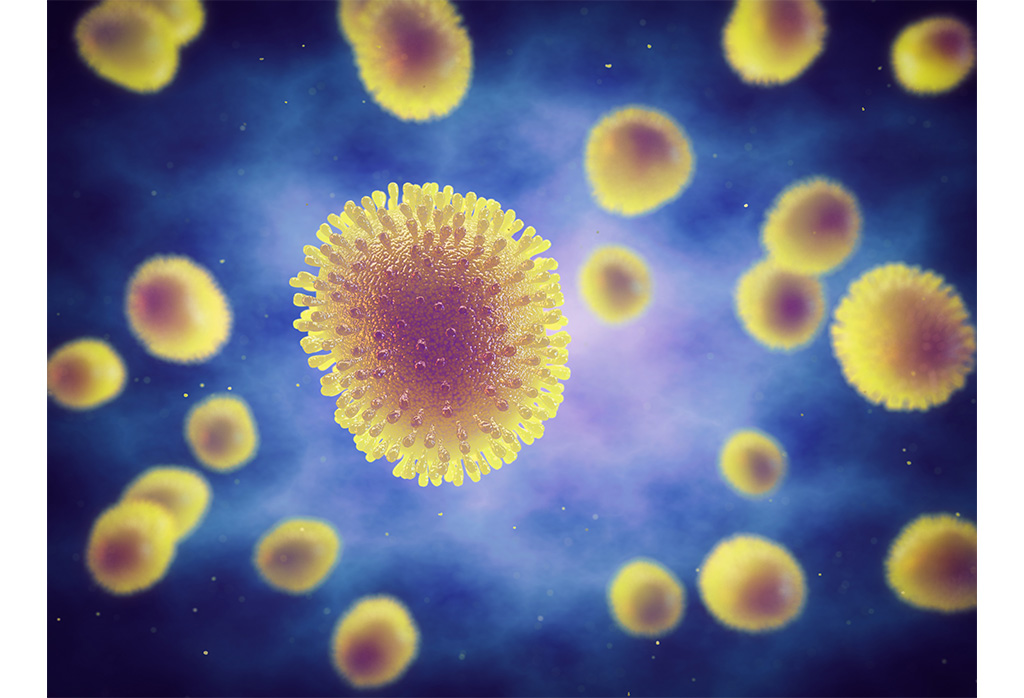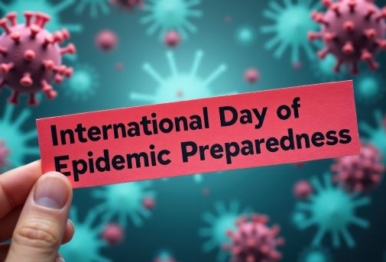
Avian influenza A (H5N1)
Avian influenza, also known as bird flu or formerly fowl plague, caused by A strains of the influenza virus, is an infectious disease affecting wild and domestic birds.
Last updated on 08 January 2025
In brief
The influenza virus can sometimes infect other animal species such as pigs and other mammals. Sporadic cases of infection occur in humans, mainly due to the H5N1 subtype. Infection results from direct contact with infected animals or indirect contact following environmental contamination by body fluids from infected animals.
Two subtypes of influenza A viruses
Avian influenza viruses are classified according to their pathogenicity in birds. A distinction is made between low pathogenic avian influenza viruses (LPAI), which cause no signs of disease or only mild disease in wild birds and poultry, and highly pathogenic avian influenza viruses (HPAI), which cause severe disease in infected wild birds and poultry and result in mortality up to 90 to 100%.
What is the situation in which these highly pathogenic avian influenza (HPAI) viruses are emerging?
Highly pathogenic avian influenza epidemics regularly ravage wild bird colonies and poultry farms around the world. Since October 2020, there has been an unprecedented increase in HPAI outbreaks in many countries in Africa, Asia and Europe, leading to the reported deaths of more than 31 million wild birds and the culling of 441 million domestic birds[1], marking the largest epidemic ever recorded in the history of avian influenza. HPAI epidemics no longer follow seasonal patterns, which usually begin in October and end in March, due to the unprecedented active circulation of HPAI in wild bird colonies during the summer period.
[1] Strategic challenges in the global control of high pathogenicity avian influenza | WOAH. May 2023.
Report from the World Organisation for Animal Health (WOAH)Human infections by the avian influenza A (H5N1) virus
According to the latest weekly situation report published by the WHO, 888 cases of infection by the avian influenza A(H5N1) virus and 463 deaths have been recorded since 2003[1], the last case dating from 25 March 2024 and having been identified in Vietnam[2]. People working in live animal markets or on poultry farms are particularly exposed to this risk, and account for the majority of human cases. A few rare cases of human-to-human transmission of the A(H5N1) virus were described during an epidemic that occurred in Asia, in Vietnam, Thailand, Indonesia and Cambodia, resulting in 53 deaths in 2003-2004.
[1] Avian Influenza Weekly Update Number 943 | WHO.
[2] Avian Influenza A(H5N1) – Viet Nam | Disease Outbreak News. WHO.

Consult the Avian Influenza A (H5N1) Emergence Unit
What are the future challenges for scientific research on avian influenza?
The transmission of highly pathogenic avian influenza (HPAI) viruses between birds and mammals, and more rarely in humans, highlights the need for a One Health approach to prevent and anticipate a zoonotic influenza pandemic.
Preventing the spread of the avian influenza
In a report published on 3 April 2024, the European Centre for Disease Prevention and Control (ECDC) focuses on limiting exposure and preventing the spread of the virus in the environment.
The main measures recommended include :
- stepping up human and animal surveillance,
- pooling data,
- providing access to rapid diagnostics,
- implementing preventive measures such as vaccinating poultry and people at risk,
- collaborating between the human and animal sectors,
- strengthening veterinary infrastructures,
- applying biosecurity measures on farms,
- and reducing contact between wild and domestic animals.
References
- Krammer, F. & Schultz-Cherry, S. We need to keep an eye on avian influenza. Nat Rev Immunol 1–2 (2023) doi:10.1038/s41577-023-00868-8.
- Xie, R. et al. The episodic resurgence of highly pathogenic avian influenza H5 virus. Nature 622, 810–817 (2023).
- Chen, W. et al. Environmental factors and spatiotemporal distribution characteristics of the global outbreaks of the highly pathogenic avian influenza H5N1. Environ Sci Pollut Res Int 29, 44175–44185 (2022).
- Puryear, W. et al. Highly Pathogenic Avian Influenza A(H5N1) Virus Outbreak in New England Seals, United States. Emerg Infect Dis 29, 786–791 (2023).
- Agüero, M. et al. Highly pathogenic avian influenza A(H5N1) virus infection in farmed minks, Spain, October 2022. Euro Surveill 28, 2300001 (2023).
- Lindh, E. et al. Highly pathogenic avian influenza A(H5N1) virus infection on multiple fur farms in the South and Central Ostrobothnia regions of Finland, July 2023. Euro Surveill 28, 2300400 (2023).
- Fx, B. et al. Highly Pathogenic Avian Influenza A(H5N1) Clade 2.3.4.4b Virus in Domestic Cat, France, 2022. Emerging infectious diseases 29, (2023).
- Swayne, D. E. et al. Strategic challenges in the global control of high pathogenicity avian influenza. 90th General Session of World Organisation for Animal Health (2023).
- Steel, J., Lowen, A. C., Mubareka, S. & Palese, P. Transmission of Influenza Virus in a Mammalian Host Is Increased by PB2 Amino Acids 627K or 627E/701N. PLOS Pathogens 5, e1000252 (2009).
- Yamada, S. et al. Biological and Structural Characterization of a Host-Adapting Amino Acid in Influenza Virus. PLOS Pathogens 6, e1001034 (2010).
- Bussey, K. A., Bousse, T. L., Desmet, E. A., Kim, B. & Takimoto, T. PB2 residue 271 plays a key role in enhanced polymerase activity of influenza A viruses in mammalian host cells. J Virol 84, 4395–4406 (2010).
- Song, W. et al. The K526R substitution in viral protein PB2 enhances the effects of E627K on influenza virus replication. Nat Commun 5, 5509 (2014).
- Hu, X. et al. Highly Pathogenic Avian Influenza A (H5N1) clade 2.3.4.4b Virus detected in dairy cattle. 2024.04.16.588916 Preprint at https://doi.org/10.1101/2024.04.16.588916 (2024).
- Drivers for a pandemic due to avian influenza and options for One Health mitigation measures | EFSA. https://www.efsa.europa.eu/en/efsajournal/pub/8735 (2024).

27 December – International Day of Epidemic Preparedness: ANRS MIE at the front line
27 December is the International Day of Epidemic Preparedness. ANRS MIE is at the frontline of this mission.
26 December 2025
